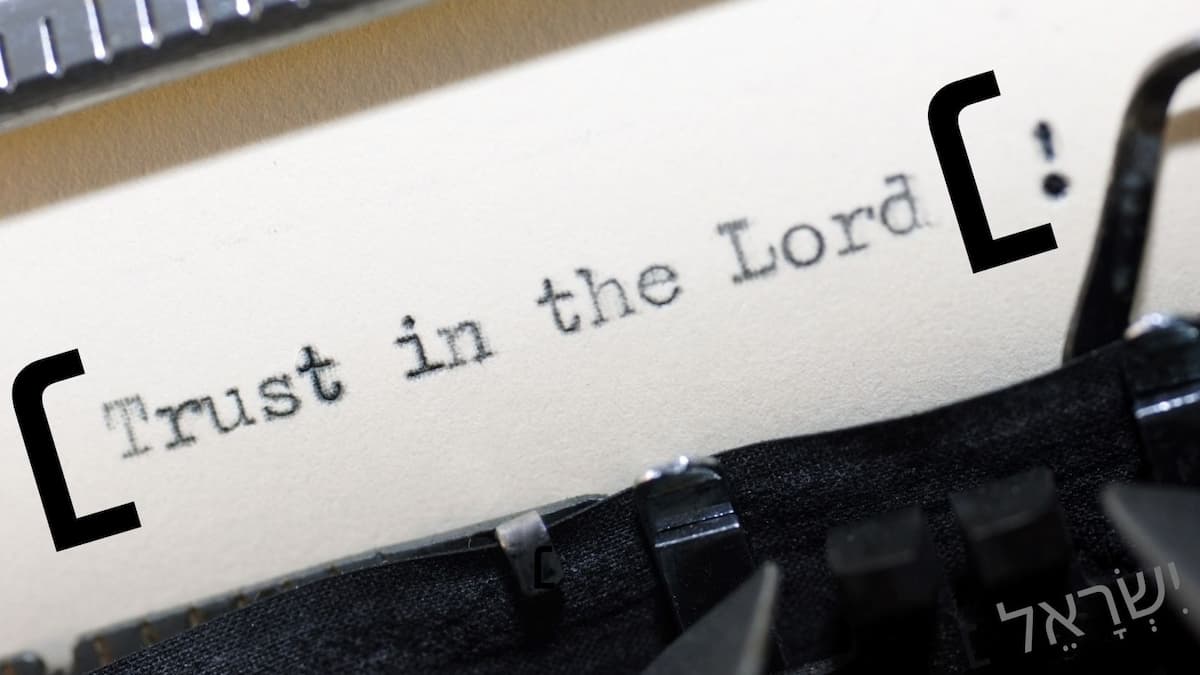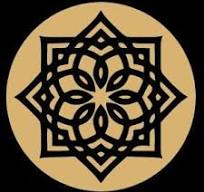Why the Book of Numbers is not about Numbers
What’s in a name?
The book of BeMidbar suffers of somewhat of an identity crisis. It is easy to determine the identity of the other books of the Torah. Genesis is about the creation and the life of the forefathers, Exodus is about the exodus and the tabernacle, Leviticus deals with the laws of the Levites and the Kohanim, and Deuteronomy, as its names suggest, is the repetition and review of law and history. But what is BeMidbar about? Numbers? Is it really חומש הפקודים – the Book of Census, as it was known in Rabbinic literature, a travelogue, or a collection of unrelated data, laws, and history?
I believe that BeMidbar’s story conveys an extremely important message to humanity, which is that the most sophisticated and detailed program could fail, even if it is Divine, without the engagement and commitment of the humans in charge of carrying it out.
Perfect Society, Perfect Hierarchy
BeMidbar starts with the description of a perfect society, with clearly drawn boundaries and set roles. The Israelite camp is presented as a center of holiness surrounded by concentric circles in descending order. The order is as follows: The Holy of Holies at the center; the Holy; the Tabernacle’s courtyard; the Levites and Aaron, in descending order: Aaron and family, Kehat, Gereshon, Merari; and finally, the Israelites. After the inner order of the camp has been established, the Torah calls for spiritual and hygienic boundaries: lepers, people who suffer from sexually transmitted diseases, and those who were in contact with a corpse must leave the camp. Their exile is temporary, and each one of them must wait the symbolic seven-days period before rejoining the camp.
The Torah also singles out the deviate woman and the Nazir as two extremes. The deviate woman lets herself be controlled by desire while the Nazir decides to detach himself from society and abstain from wine. Both are conceptually, if not physically, ostracized. The Torah suggests that they are outside the camp because their behavior is not healthy, and that it is preferable to reach a balance between pursuing of spirituality and enjoying life.
Between the two sections, the one which deals with lepers and those who suffer from spiritual contamination, and the one dealing with the Nazir and the deviate woman, there is a paragraph which seems out of place. It speaks about paying back financial obligations, and it also states that an unpaid obligation to another person is considered an offense towards God. According to the theory offered here, not only this paragraph belongs here, but it is an excellent example of how the Torah considers transgression against others to be a religious offense. The Torah declares that in order to maintain the camp clean and holy, it is not enough to send away those we consider unholy because of diseases, but also those whose business ethics are flawed.
Following the clarification of boundaries and the cleansing of the camp, the divine blessing is bestowed upon the people, offerings are brought, the Tabernacle is inaugurated, and the Israelites start their first journey: ויסעו בראשונה על פי ה’ ביד משה – they traveled, for the first time as an organized camp, by the word of God, delivered through Moshe!
Perfect Society, Imperfect Individuals
Within three days, the people complain for no reason, and then cry for food. Moshe is willing to quit his job, and when he is told by God that everyone is going to get meat, he appears to be incredulous. Two men prophesy without Moshe’s permission, Miriam and Aaron speak against Moshe, the scouts start a rebellion… the list goes on and on.
Thus, we see how a perfect plan fails without the commitment of individuals to put aside their pride and sense of entitlement and carry the plan out.
David Brooks writes in The Social Animal:
You can siphon money to poor areas, but unless a culture develops self-control, social mobility is unattainable.
You can raise or lower taxes, but without trust and confidence, corporations and institutions will not form, and people will not invest in each other.
You can declare elections, but without responsible citizens, democracy will not flourish. Criminologist James Q. Wilson, who devoted his life to shaping and writing public policy, finally arrived at this fundamental truth: “…at the core, in almost every field of public engagement we seek to encourage people to act morally and ethically, whether we deal with students, people applying for government aid, potential criminals, voters, or elected representatives.”
The narrative of BeMidbar teaches us that same idea, as valid today as it was millennia ago in the desert.
The Inverted Nunim
At the end of chapter ten of Numbers (verses 35-46), the following, very famous paragraph, is framed by two inverted נונים:
וַיְהִ֛י בִּנְסֹ֥עַ הָאָרֹ֖ן וַיֹּ֣אמֶר מֹשֶׁ֑ה קוּמָ֣ה׀ יי וְיָפֻ֙צוּ֙ אֹֽיְבֶ֔יךָ וְיָנֻ֥סוּ מְשַׂנְאֶ֖יךָ מִפָּנֶֽיךָ. וּבְנֻחֹ֖ה יֹאמַ֑ר שׁוּבָ֣ה יי רִֽבְב֖וֹת אַלְפֵ֥י יִשְׂרָאֵֽל
When the ark traveled, Moshe would say: “Rise, YHWH, let your enemies scatter and your adversaries flee You!”
When it rested, he would say: “Return, YHWH, the myriads of thousands of Israel!”
In the synagogue, the first part of this paragraph is recited when the Torah is taken out of the ark, and the second part when the Torah is returned. The paragraph could simply be explained as a battle hymn. The ark used to travel with the Israelites when they went to war (see Num. 14:44 and I Sam. 4:3-4), and this was a prayer for victory in battle and safe return home. However, the inverted letters before and after the paragraph have granted it an enigmatic nature, generating many commentaries and extensive literature (See Torah Shelema by Rabbi M. M. Kasher)
I believe that the inverted Nunim are a commentary on the Torah, a commentary so ancient that it was recorded on the scroll itself. The idea that those inverted letters are a rabbinic addition is supported by a Midrashic compilation known as מדרש חסרות ויתרות:
מה ראו חכמים ליתן נוני”ן הפוכין? – why did the rabbis decide to place inverted נונים around this paragraph?
The answer of the Midrash is that these two verses are not part of the prophecy of Moshe but were rather said by Eldad and Medad, the two elders left behind in the camp (11:26-29). I will return to this answer later, and turn to tractate Shabbat of Talmud Bavli (104:1):
אמרי ליה רבנן לרבי יהושע בן לוי: אתו דרדקי האידנא לבי מדרשא ואמרו מילי דאפילו בימי יהושע בן נון לא איתמר כוותייהו:… נו”ן כפופה נו”ן פשוטה – נאמן כפוף נאמן פשוט
The rabbis told R. Yehoshua ben Levi, children came today to Bet HaMidrash and said things, the like of which was unheard of even at the time of Yehoshua bin Noon:… bent nun and straight nun (נ,ן) represent the bent loyal person and the upright loyal person…
The commentary about the two forms of the letter nun is part of the presentation of the children, who offered symbolic interpretations for all the letters in the Hebrew alphabet. Though their presentation is interesting, it is hardly anything more than wordplay on the names or shapes of the letters, and it is therefore hard to understand why it merited such words of praise from the rabbis. The answer is that this paragraph in Shabbat holds the key to the rabbinic decision to frame the Ark’s battle hymns between inverted Nunim.
The children who appear in Bet HaMidrash are anonymous, and their words are described as paralleling and even surpassing information transmitted in the time of Yehoshua. Yehoshua was Moshe’s disciple and the first in the chain of transmission of the Torah from one human to another. The children therefore represent an unbroken chain of transmission which could be traced all the way back to Moshe. Unlike the tradition passed on to Yehoshua, which is codified and even rigid, the children’s tradition is more emotional and symbolic. In that tradition, the letter nun stands for loyalty. The bent nun, the one which is used in the middle of a word, is analogized to a loyal servant who is also submissive, while the upright, or final nun, is compared to a loyal servant who holds his head up.
The mention of Yehoshua bin Noon in the Talmudic paragraph is alludes to Yehoshua’s relationship with Moshe, which was one of deep loyalty:
וּמְשָׁ֨רְת֜וֹ יְהוֹשֻׁ֤עַ בִּן־נוּן֙ נַ֔עַר לֹ֥א יָמִ֖ישׁ מִתּ֥וֹךְ הָאֹֽהֶל – His [Moshe’s] servant, Yehoshua bin Noon, was a young man, who would never leave the tent (Ex. 33:11).
When we put together the two rabbinic traditions, we can conclude that the rabbis chose to mark the paragraph with inverted Nunim to tell us that the concept of loyalty has been turned on its head. The inverted Nunim are road-signs telling us to carefully look at what happens before and after them. Before them, in the first ten chapters of BeMidbar, the Torah discusses the perfect form of government and nation, while after them there is an ongoing trust crisis affecting all layers of Israelite society and causing near-total collapse. Here is a list of the events which follow the Ark’s battle hymn, and in which the sense of trust is eroded at all levels of society:
11:1-3: The people complained, apparently for no reason, and are punished by fire.
11:4-9: The riffraff(האספסוף) craves meat, as a result the whole nation cries, reminisces about the food they had in Egypt, and complains about the manna.
11:10-15: Moshe rebels against God, saying that he does not want to lead the nation anymore, and claiming that the role has been for him a torture.
11:21-22: Moshe seems to doubt God’s ability to deliver meat to the whole nation.
11:26: Two elders, Eldad and Medad, prophesy on their own without being authorized by Moshe. This is either a rebellion by them or God telling Moshe that He is in control.
11:31-34: The Israelites descend like predators on the miraculously delivered quail and are harshly punished.
12:1-15: Miriam and Aaron criticize Moshe. They are rebuked by God, and Miriam contracts leprosy for seven days.
13:1-33: The scouts return from Canaan and dissuade people from going there. The people do not believe that God can help them conquer the Canaanites.
14:1-4: The Israelites cry all night and then decide to appoint a new leader, instead of Moshe, and return to Egypt.
14:10: After Yehoshua and Caleb try to convince the people that it is possible to conquer Canaan, the people attempt to stone them, along with Moshe and Aharon.
14:36-38: The scouts instigate the people again and die in a plague.
14:39-45: The Israelites, remorseful for their rebellion, wage battle against the mountain dwelling nations in defiance of Moshe’s advice. The Ark does not accompany them to battle and they suffer a crushing defeat.
15:32-36: A man transgresses Shabbat in an open act of rebellion against Moshe and the laws of the Torah.
16:1-35: Korah accuses Moshe of assuming positions without divine approval, while two hundred and fifty of his followers compete for the position of High Priest by offering unsolicited frankincense.
17:6-7: Following the punishment of Korah and his followers, the Israelites blame Moshe and Aharon for their death.
20:2-5: The Israelites complain about lack of water. They say that Moshe and Aharon took them from Egypt to die in the desert, and that they did not deliver on the promise to bring them to the land of milk and honey.
20:9-13: Moshe hits the rock instead of talking to it, and as a result is told by God that he will not enter the Land of Canaan. It almost seems as if God was looking for a pretext to “fire” Moshe and Aharon.
21:4-9: The Israelites complain about lack of bread and water and say that the manna is rotten. They are attacked by poisonous snakes.
25:1-9: The Israelites are tempted by the Moabite women, descending into promiscuity and idolatry. Zimri openly defies Moshe by going with a Midianite woman into the Tabernacle.
32:1-32: The tribes of Gad and Reuven decide to stay in the other side of the Jordan river.
In total, there are twenty instances of rebellion and loss of trust, and it is to this chain of events that the rabbis were directing our attention with the inverted Nunim.
Questions on Parashat HaShavua
שְׁאֵלוֹת לְפָרָשַׁת הַשָּׁבוּעַ: בְּמִדְבַּר
1. Parashat BeMidbar is the ____________ Parasha of the Book of BeMidbar.
2. Moshe was commanded to count _____________. Why?
3. Which tribe was not counted with the other tribes? Why?
4. Why was it important to count בְּנֵי יִשְׂרָאֵל and the Levites?
5. The Levites were counted from the age of ____________.
6. Who were supposed to serve in the Mishkan but were replaced by the Levites? Why?
7. Today we have a ceremony for replacing the firstborn with the Levi. This ceremony is called _________________.
8. In what order did בְּנֵי יִשְׂרָאֵל camp in the desert?
9. How many tribes were on each side?
10. Why was it important to camp in orderly manner?
11. Who are the families of the Tribe of Levi?
12. What were the main tasks of the Levites?
13. What was the miracle of carrying the Ark – אֲרוֹן הָעֵדוּת?
Answers for Parashat HaShavua – בְּמִדְבַּר
1. First.
2. בְּנֵי יִשְׂרָאֵל. To know how many people will be in the army.
3. Levi. Because the Levites served in the Mishkan and not in the army.
4. To show that every person is important.
5. One month.
6. The firstborn. Because HaShem saved them during מַכַּת בְּכוֹרוֹת.
7. פִּדְיוֹן הַבֵּן.
8. The Mishkan was in the center, the Levites around the Mishkan, and the rest of the tribes around the Levites.
9. There were four groups of three tribes each.
10. To make sure that everybody is present, and that people do not get lost in the desert.
11. Moshe, Aharon and Aharon’s sons, and the families of Gereshon, Kehat, and Merari.
12. To guard the Mishkan, to take it apart while traveling, carry it, and rebuild in when camping.
13. The ark was very heavy, and it carried the Levites who were holding it.









